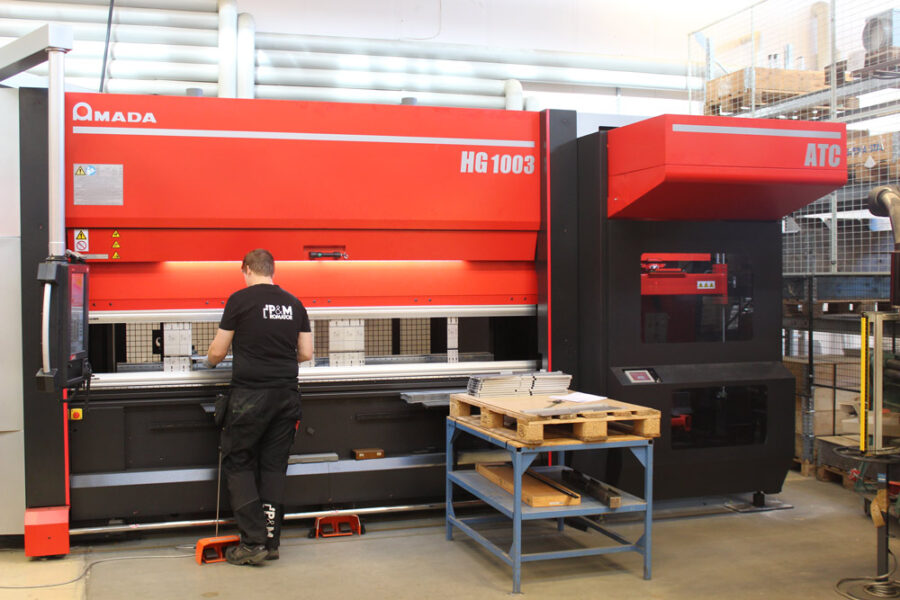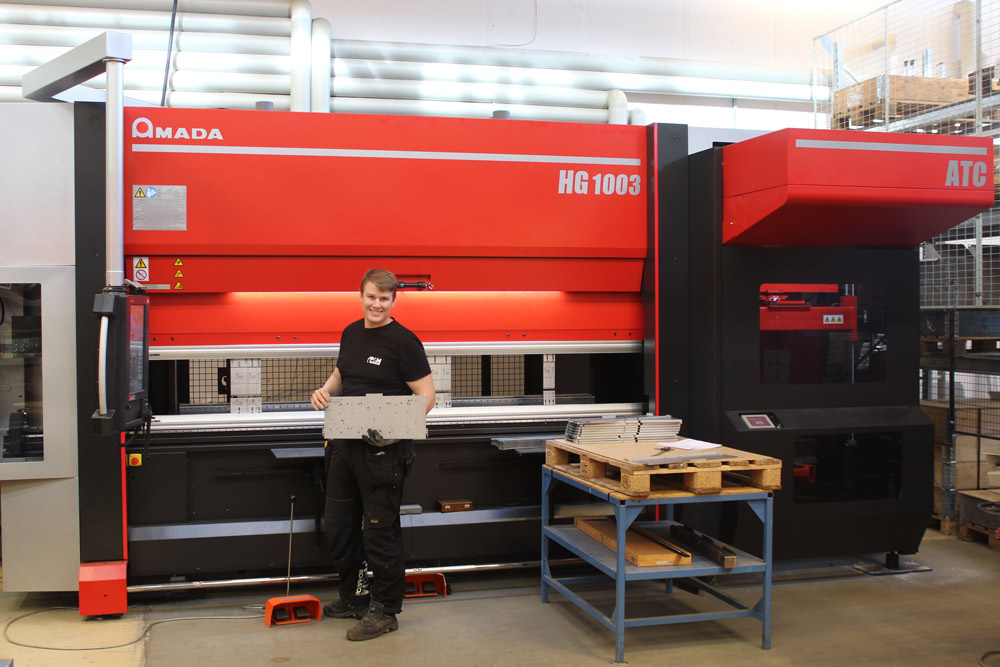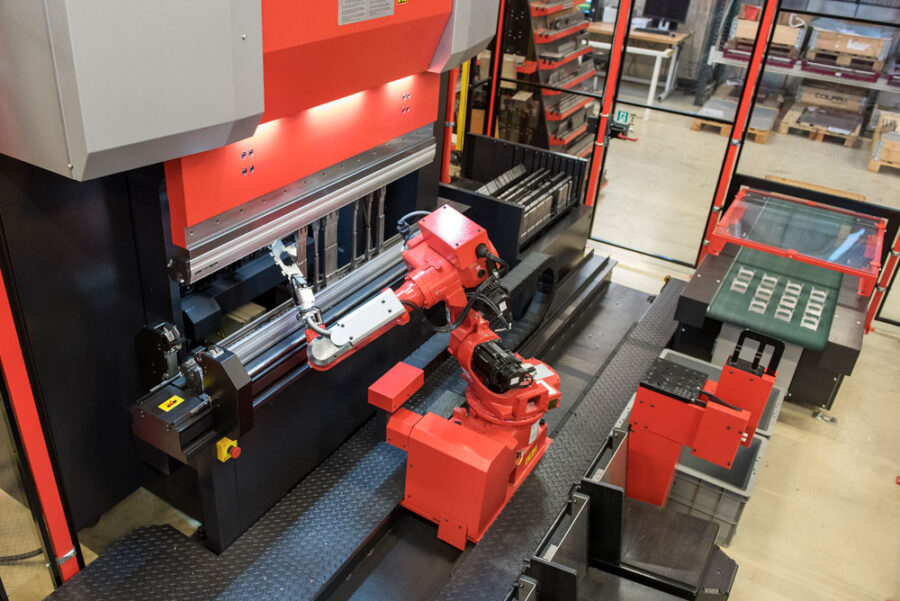Bending
Thanks to our modern machines and long experience, we have great opportunities to achieve a very precise result in edge pressing.

Bending
Edge pressing, also known as edge bending, is one of the most common ways to fold edges or shape sheet metal parts that are not completely flat. Thanks to our modern machines, we have great opportunities to get a very precise result.
But machines in all honor, you must also have solid experience and a good selection of tools for the machines. Plåt & Mekano Romator has all these components needed to produce really good and even advanced bent sheet metal parts. Our staff are also very solution-orientated, which means that "impossible" projects sometimes become reality with us. You can safely turn to us if you have questions about your design, and we can help you see what is feasible or cost-effective. Our large machine park in press brake production creates both good opportunities for long series as well as the flexibility required for short rapid prototypes.
Precise bending with unique robotic press brakes
The latest addition to our machine park is a seven-side press brake with integrated tool storage. It quickly changes tools between the different jobs and is ideal for small series. The precision is high, partly thanks to integrated angle measurement. We also have a unique robot press brake for smaller details in our machine park, which is easily programmed according to your CAD file. The machine then performs tool rigging, picking the part, measuring and checking angles, and unloading - completely automatically. The robot press brake is suitable for both prototypes and long series.
Choosing the right sheet metal bending is a cost advantage
Bending sheet metal can often be used instead of assembling several parts, which often saves costs. But those who are not familiar with production may need help to draw the line between what is possible to bend and what is not, as well as what is cost-effective. We help our customers draw the boundaries, which can be difficult and unfortunately, CAD programs do not help. Therefore, a dialogue with Plåt & Mekano Romator's staff can be a good start to the design work.
How does bending work?
Bending begins with an operator programming the machine, manually or automatically, to set up the right tools in a specific order. The operator must consider the thickness of the sheet metal, the quality of the material, and the finish and tolerance requirements of the drawing when setting up the machine. The tools must have the correct angles and lengths, and the distances of the stops against which the sheet metal rests must be adjusted. A number of test pieces must be made and adjustments may be required to trim the machine in relation to the material.
The plate is placed on a lower tool, known as a pad. The upper tool, the knife, then presses down on the underlying pad with many tonnes of force. This causes the sheet metal to be folded/bent according to the tools. The part is then moved to the next station, where the next bend is made until all bends are completed. We can produce parts that have anything from one to more than thirty bends on the same part. The tolerances for press brake bending are usually medium tolerances, ISO2768-m. See tolerance table here. The presses at Plåt & Mekano Romator have a bending length of between 1 and 3 meters and a pressing force of between 50 and 170 tonnes.
Don't hesitate - get in touch with your questions!
Do you have any questions about our services or products? Just get in touch with one of our competent employees!
Contact us
Choose sheet metal bending at Plåt & Mekano Romator.
- Many years of professional experience, very knowledgeable and problem-solving staff.
- One of the largest machine capacities in the Stockholm region with a large selection of tools - which creates flexibility, speed, and the possibility of large volumes.
- We have a unique self-releasing robotic press brake for smaller parts
- A state-of-the-art, high-speed press brake with integrated tool storage, ideal for short runs.
- We can manufacture our own tools where necessary for smaller batches, reducing costs.



